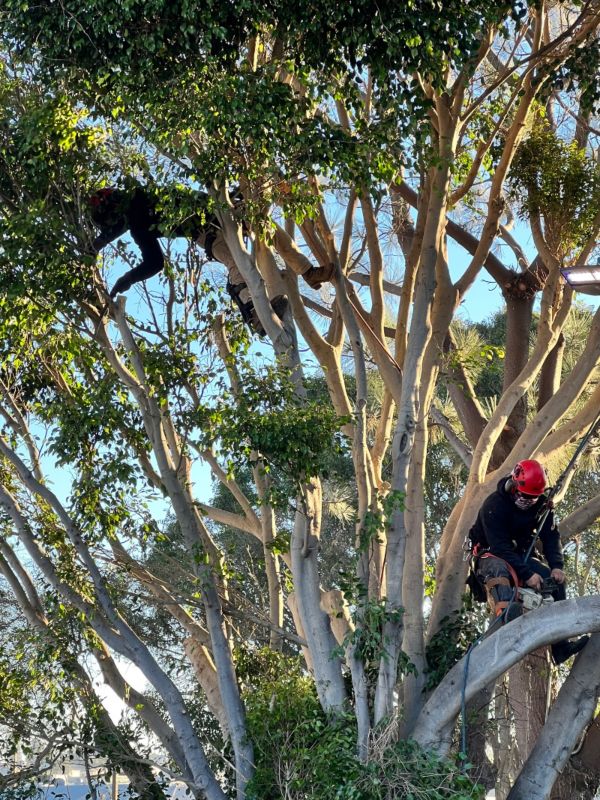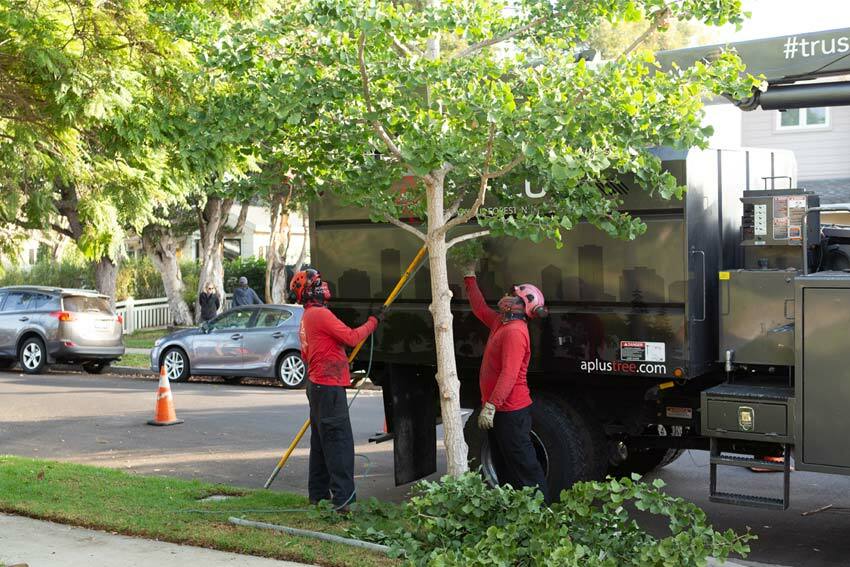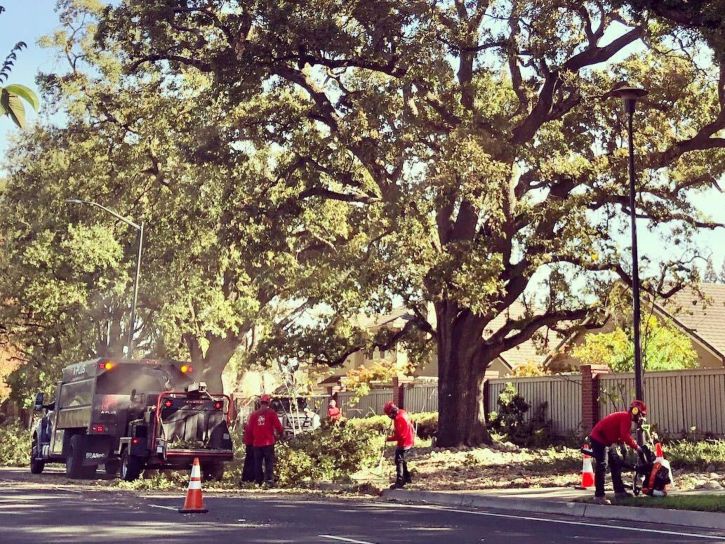Every urban tree requires pruning to ensure tree health, structure, and safety. But knowing the best time to prune trees can be confusing. The ideal time to prune depends on many factors, such as your pruning reasons, the type of tree, the condition of your tree, and more. Read on to learn more about the best time for tree trimming and pruning and uncover professional pruning tips to make sure you’re doing it right!
Why Is it Important to Prune Trees?
- Promotes Healthy Growth: Pruning removes dead, diseased, or damaged branches, so the tree can direct its resources towards new and healthy growth.
- Improves Safety: Overgrown branches can impair visibility and pose risks to people, property, and utility lines. Pruning helps prevent accidents by removing branches that could fall during storms.
- Enhances Appearance: Regular pruning improves a tree’s appearance, adding to landscape appeal and property value.
- Prevents Pests and Disease: Dead or dying branches can attract pests and disease. By pruning away these areas, you reduce the risk of infestations that can spread to the rest of the tree.
How do I Know What Trees to Prune and When?
Different tree species have different pruning needs, and the timing can vary based on their growth cycles. Here are some general guidelines:
- Deciduous Trees: Many deciduous trees benefit from pruning during their dormant season, typically in late winter or early spring before new growth starts. Pruning during dormancy can reduce the risk of disease transmission and sap loss.
- Flowering Trees: Timing for pruning flowering trees depends on when they bloom and whether they flower on old or new wood:
– Trees that Bloom on Old Wood: Trees like cherry and magnolia bloom on old wood, which means the flowers develop on the previous year’s growth. Pruning these trees in winter or early spring can remove the flower buds. Prune these trees right after they finish flowering in the spring so they have time to grow new flower buds for next year.
– Trees that Bloom on New Wood: Trees like crepe myrtle and butterfly bush bloom on new wood, meaning the flowers form on the current season’s growth. These trees can be pruned in late winter or early spring before new growth starts, encouraging vigorous blooms in the summer.
- Evergreen Conifers: Many evergreen conifers, such as arborvitae and juniper, require minimal pruning. If pruning is necessary, it is best done in late winter or early spring before new growth starts. Pines are an exception and should be pruned in early to mid-summer when the new growth, called “candles,” can be pinched back to control shape and size without damaging the tree.
- Avoid Pruning During Peak Disease Seasons: Some trees are vulnerable to diseases if pruned during certain times of the year. Avoid pruning elms from April-October, which is the peak time for beetles that spread Dutch elm disease. And avoid pruning oaks between April-July when oak wilt, a deadly fungal disease, is the most active.
- Dead or Diseased Branches: Prune these at any time of the year to maintain tree health and safety.

What About Young or New Trees?
Pruning young or newly planted trees helps establish strong, healthy structure. Follow these tips:
- Focus on Structure: In the first few years, pruning helps shape the tree and establish a strong central leader. Remove any competing branches and focus on creating a balanced, open canopy.
- Don’t Over Prune: New trees should be pruned lightly to remove broken or crossing branches. Over-pruning can stress a young tree, hindering its ability to establish itself.
- Timing for Young Trees: For most young trees, pruning is best done in late winter or early spring during the dormant season. Avoid heavy pruning during the first year of planting because pruning reduces resources the tree needs to establish healthily.

What to Consider When Pruning a Tree
Proper pruning improves tree health, beauty, and safety, but improper pruning does more harm than good! To do it right, keep the following in mind:
- Tree Health: Prune only what’s necessary to maintain tree health. Over-pruning can weaken the tree, making it vulnerable to diseases and pests.
- Branch Structure: Focus on removing branches that are crossing, rubbing, or growing inward. This helps improve airflow and light penetration, reducing the likelihood of disease.
- Cutting Technique: Make clean cuts at the branch collar (the area where a branch meets the trunk) to promote healing. Avoid leaving stubs or cutting too close to the trunk, which can leave the tree vulnerable to decay.
- Tool Maintenance: Always use sharp, clean tools to make precise cuts and reduce the risk of spreading diseases between trees.
Recommended Timing for Tree Pruning
While specific timing can vary based on tree species and local climate, here are some general recommendations:
- Late Winter to Early Spring: This is a great time to prune many trees because they are dormant, minimizing stress and allowing for faster healing before new growth begins.
- Summer Pruning: This is best for slowing down the growth of overly vigorous trees. Summer pruning can help direct growth and improve tree shape.
- Fall Pruning: Many trees lose their leaves in the fall, providing better branch visibility. Fall pruning also helps reduce tree failures and damage during winter snow and storms.
- Emergency Pruning: Remove dead, diseased, or dangerous branches immediately, regardless of the season.

Tree Pruning Tips
Here are some tips to help you get the most out of tree pruning!
- Know Your Trees: Familiarize yourself with the types of trees on your property and their specific pruning needs.
- Don’t Over-Prune: Removing more than 25% of a tree’s living canopy in a single year can cause stress and damage.
- Watch for Disease: Always inspect the tree before pruning. If you notice signs of disease, consider consulting a professional arborist.
- Safety First: When pruning large branches or tall trees, prioritize safety. Use proper equipment or hire a professional for high or hazardous pruning tasks.
Pruning is crucial to maintain the health, safety, and beauty of your trees. Our Arborists are professionally trained and fully equipped to prune your trees correctly and safely. Contact us for free assessments!





